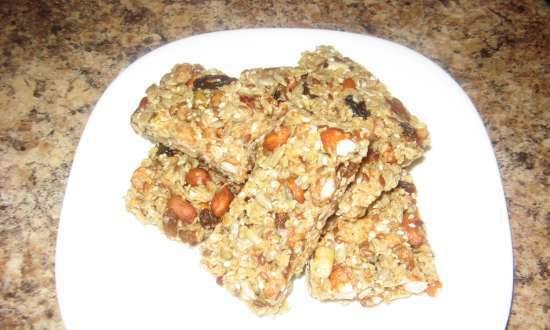|
 A little over 50 years ago, a Japanese scientist, Dr. Kikunae Ikeda, decided to find out what explains the special pleasant taste of the dried seaweed "japonica kelp". The Japanese, Chinese and other inhabitants of the Far East feed mainly on plant and fish niches. To make it less bland and more appetizing, they use dried seaweed, and in particular "kelp" seaweed. A little over 50 years ago, a Japanese scientist, Dr. Kikunae Ikeda, decided to find out what explains the special pleasant taste of the dried seaweed "japonica kelp". The Japanese, Chinese and other inhabitants of the Far East feed mainly on plant and fish niches. To make it less bland and more appetizing, they use dried seaweed, and in particular "kelp" seaweed.
Dr. Ikeda, examining the seaweed in detail, came to the conclusion that its pleasant taste "japonica kelp" owes a special chemical substance contained in it - glutamic acid. Having isolated it in its pure form, he became convinced that the sodium salt of this acid is an excellent flavoring seasoning that is able to restore the natural taste of many products and give food a meaty aftertaste.
Since then, in Japan and in some other countries, this salt has been specially developed, which chemists call monosodium glutamate. Glutamate is a white with yellow powder, consisting of very small crystals. In Japan, it is marketed under the name "adzhino-moto", which in Russian means "the essence of taste", and one might say "soul of taste".
The Chinese call this product "wei-shu", that is, gastronomic powder. And the French, not without some reason, dubbed glutamic acid "mind serum." Be that as it may, just add a little whisper of this amazing powder to a bowl of vegetarian soup, and the food immediately acquires some kind of value, becomes more satisfying and appetizing. It is not for nothing that sodium glutamate crystals are sometimes called appetite crystals.
I had a chance to attend a tasting of food concentrates. Pea soup was served. The tasters tasted and approved. Then another soup was served and everyone unanimously declared: boiled in meat broth! And ... they were wrong. It's just that a pinch of monosodium glutamate was added to every bowl of this concentrate soup.
Food factories and factories now produce sausages, canned food, concentrates and some other products with a small addition of this wonderful seasoning. Monosodium glutamate is used both in canteens and restaurants; it clearly improves the taste of many dishes. But glutamic acid isn't just a great flavoring. It also has great physiological significance. It is generally known that in the process of food digestion, protein substances are decomposed into their constituent parts, primarily into amino acids. Sometimes the decomposition goes deeper, and then ammonia is formed from amino acids. A solution of ammonia in water is ammonia, familiar by its pungent smell. If there is enough glutamic acid in the human body, then it combines with ammonia or, as chemists say, binds it and in the form of a new chemical compound - glutamate is excreted from the body.
With a lack of glutamic acid, ammonia accumulates and causes poisoning of nerve tissues, resulting in severe nervous and mental illnesses. In this regard, recently, doctors began to prescribe glutamic acid or its salts (calcium and magnesium) in the treatment of childhood diseases associated with damage to the central nervous system, with weakening of memory in adults and, in general, with certain nervous and mental illnesses. So, glutamic acid not only improves the taste of food, but it also serves as a reliable protection of the most delicate and thinnest cells, of which the brain and nerves are built. And for sick people - it is a healing remedy.
What is glutamic acid and its sodium salt made of?
In different countries from different raw materials. In China, for example. it is made from soy protein. In the USA and Canada - from the remains of sugar beet production - from molasses.And in the German Democratic Republic - from wheat protein. In a word, in each country glutamic acid is obtained from the most available raw materials in local conditions.
 We have been producing medical glutamic acid for a relatively long time. As for monosodium glutamate as a flavoring seasoning, it is produced in some sugar and alcohol factories from the waste of beet sugar and alcohol production. These wastes contain protein, which is subjected to cleavage (hydrolysis) with the help of an acid or alkali, and then glutamic acid is isolated and purified from the formed amino acids. A scheme has also been developed for obtaining glutamic acid and its sodium salt from gluten, a protein waste of corn-starch production. We have been producing medical glutamic acid for a relatively long time. As for monosodium glutamate as a flavoring seasoning, it is produced in some sugar and alcohol factories from the waste of beet sugar and alcohol production. These wastes contain protein, which is subjected to cleavage (hydrolysis) with the help of an acid or alkali, and then glutamic acid is isolated and purified from the formed amino acids. A scheme has also been developed for obtaining glutamic acid and its sodium salt from gluten, a protein waste of corn-starch production.
Interestingly, recently, Japanese scientists have identified microbes that are capable of synthesizing glutamic acid from glucose (simple sugar) and ammonium salts. This biochemical synthesis of "tasty acid" has already been carried out. This was reported by the Japanese scientist Kinoshita at the V International Biochemical Congress in Moscow.
In any case, tens of thousands of tons of glutamic acid and monosodium glutamate are now produced annually in the world. This is quite a lot, considering that this seasoning is used in negligible doses - a pinch on a plate. There is no doubt that in a few years, monosodium glutamate will be used not only in the food industry, it will become an indispensable accessory to our table, just like salt, pepper or mustard.
Volper I. N. Legends and be about products.
|
 A little over 50 years ago, a Japanese scientist, Dr. Kikunae Ikeda, decided to find out what explains the special pleasant taste of the dried seaweed "japonica kelp". The Japanese, Chinese and other inhabitants of the Far East feed mainly on plant and fish niches. To make it less bland and more appetizing, they use dried seaweed, and in particular "kelp" seaweed.
A little over 50 years ago, a Japanese scientist, Dr. Kikunae Ikeda, decided to find out what explains the special pleasant taste of the dried seaweed "japonica kelp". The Japanese, Chinese and other inhabitants of the Far East feed mainly on plant and fish niches. To make it less bland and more appetizing, they use dried seaweed, and in particular "kelp" seaweed.






